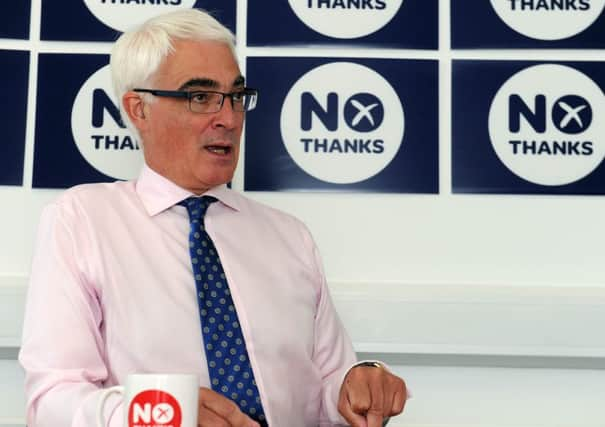Comment: No campaign stand on pound losing allure


Despite the apparent failure of the announcement to move the polls in their direction when it was first made in February, they have continued to play the card since – not least in the leaders’ debate ten days ago when Alistair Darling appeared to have Alex Salmond on the ropes when questioning him persistently on the issue.
But our exclusive poll today raises questions about just how persuasive this argument is proving to be.
Advertisement
Hide AdAdvertisement
Hide AdFor a start it seems to fly in the face of what voters would want to happen if Scotland does vote Yes. No less than 61% say that reaching an agreement with the rest of the UK on using the pound would be in Scotland’s best interests – a figure that has barely changed from the 63% that were of that view when ICM last addressed the issue shortly after the initial announcement in February.
Moreover, those who say they will vote No (62% in favour) are just as likely to want to keep the pound as those who say they are going to vote Yes (66%). Although perhaps some of these No voters are simply saying they want to keep the pound come what may, it appears that many No voters would not want the threat to be implemented should in fact Scotland vote Yes.
Meanwhile, the threat is still widely disbelieved. As many as 45% still believe that an independent Scotland would be able to use the pound in much the same way as it does now, only slightly down on the 47% who were of that view in February. Just 38% are now clear that an independent Scotland would be unable to carry on using the pound in an unchanged manner, little different from the 35% who were previously of that view.
In short, for all the emphasis given to this issue by the No side, it appears that it has signally failed to convince most Scots that its threat is credible. That perhaps indeed is why it is having to keep on repeating it.
Doubts are, unsurprisingly, particularly common among Yes voters, no less than 80% of whom believe that an independent Scotland would be able to keep the pound – slightly higher than the 75% who were of that view in February. Evidently many Yes voters discount the No side’s threat and thus feel able to maintain their support for independence.
What perhaps is more surprising is that nearly twice as many undecided voters (40%) disbelieve the threat than believe it (21%). There is still much work for the No side to do if the currency issue is going to prove a particularly rich seam for it in the four weeks of campaigning left.
So, can the Yes side in fact safely ignore the currency issue? Not necessarily. For while the No side’s threat may be widely disbelieved, many voters are also sceptical that the Yes side itself has an adequate answer on what currency an independent Scotland should use.
Twice as many voters (52%) feel that the Scottish Government’s currency plans are unconvincing as believe that they are convincing (26%). Even amongst Yes supporters, only 62% reckon they are convincing.
Advertisement
Hide AdAdvertisement
Hide AdSalmond may be able to avoid taking up the No side’s challenge to tell us his currency Plan B, but it looks as though he does need to make a better fist of selling his plan A.
• John Curtice is Professor of Politics, Strathclyde University